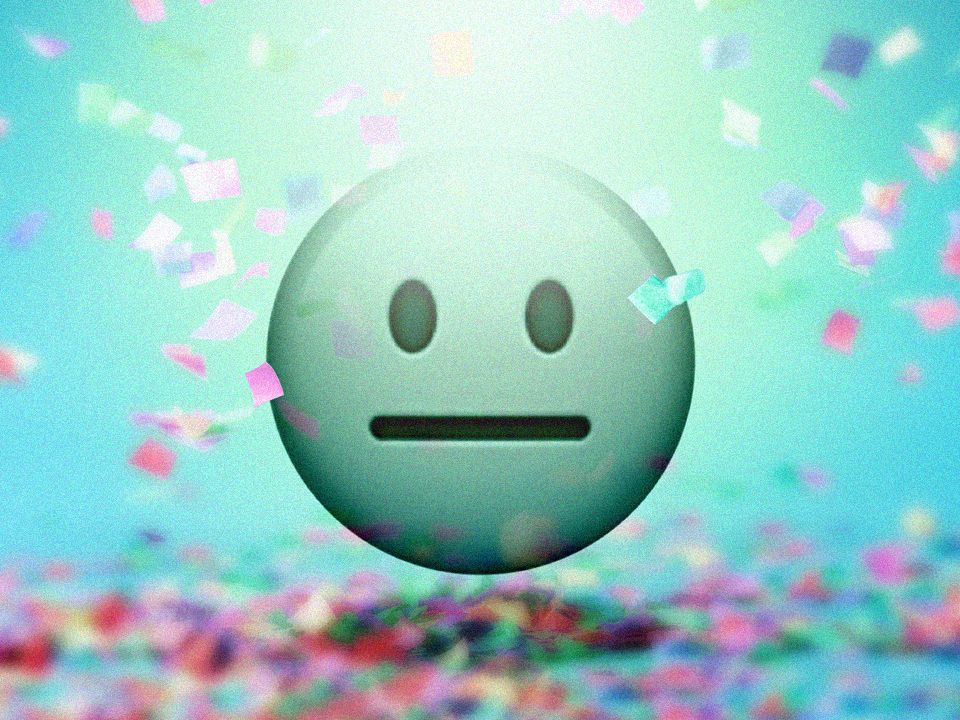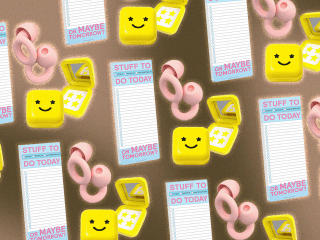Feeling Kinda Numb Lately? You Could Be Experiencing Anhedonia
Let’s discuss the blah of it all—and how to deal.
Everybody feels off from time to time, but if you’ve been feeling generally blah or kinda numb for a couple weeks or more, it might be a sign that something bigger’s going on with your mental health. There’s actually a word for that pleasure-less existence. It’s called anhedonia.
While it’s not a mental health condition, anhedonia is a symptom that shows up multiple times in the Diagnostic and Statistical Manual of Mental Disorders (DSM-5-TR), especially in relation to depression and suicidal ideation. But—worth noting!—you could experience anhedonia without any diagnosable mental health condition, adds psychiatrist Judith Joseph, MD, MBA.
Chances are you’re looking to find out why you feel empty inside and whether anhedonia could be the thing you’re dealing with. Here, we explain what anhedonia is, what it feels like, and what you can do to start feeling better.
What is anhedonia?
Technically speaking, anhedonia is “the inability to enjoy experiences or activities that normally would be pleasurable,” according to the American Psychological Association. It’s basically one of the hallmark symptoms of major depressive disorder (MDD), described in the DSM-5-TR as “markedly diminished interest or pleasure in all, or almost all, activities most of the day, nearly every day.” It could also be described anecdotally as "high-functioning depression."
Besides a lack of pleasure, anhedonia can also manifest as a feeling of numbness or emptiness. “When you have anhedonia, it’s not just not feeling joy,” says Dr. Joseph. There are a bunch of other feelings, like stress or sadness, that you might not feel as much as you normally do, she adds.
There are two main types of anhedonia, which help experts understand exactly how the symptom is impacting your life, explains Dr. Joseph. Physical anhedonia is when sensations that used to activate your pleasure response (like eating, having sex, or hugging) no longer do it for you. With social anhedonia, you might not feel good (or feel anything at all) when spending quality time with your family or hanging out with friends, says Dr. Joseph. And you can definitely experience both types at once.
Some people dealing with anhedonia don’t find enjoyment in *anything* anymore, whereas others can still find pleasure in certain settings, even if they’re feeling numb in other areas of life, explains Tiffany Ho, PhD, a cognitive neuroscientist and assistant professor in the psychology department at University of California, Los Angeles.
Just as the symptoms of anhedonia can vary a lot, so can the root causes. Like we said, this constant feeling of blah is a common sign of depression (even high-functioning depression), but it can also pop up with other mental health conditions, like anxiety, PTSD, and schizophrenia, says psychiatrist Susan J. Noonan, MD, MPH, author of Take Control of Your Depression.
Still, being hit with a case of anhedonia doesn’t mean that you definitely have MDD or any other diagnosable mental health condition, explains Dr. Ho. Anhedonia could be triggered by a physical condition, like chronic pain, or stressful life events, like experiencing burnout at work or caring for a sick loved one, she adds.
How can I deal with anhedonia?
If your anhedonia seems rooted in something situational, it could resolve itself once the stressful sitch is over, says Dr. Noonan. That said, even if it’s not caused by a mental health condition, you shouldn’t just ignore this symptom, says Dr. Joseph. If you don’t address the nothingness or try to push through, it can easily turn into hopelessness, she explains. Plus, the association between anhedonia and suicidal ideation is real and worth paying attention to.
So, all this to say, if you’ve been experiencing physical or social anhedonia (or both) for two weeks or more, you’d benefit from finding a therapist who can help you get to the bottom of why it’s happening, says Dr. Noonan.
Cognitive behavioral therapy (CBT), is a therapeutic modality your mental health pro might use to help you change the thought patterns and beliefs that keep you feeling stuck and unhappy, says Dr. Noonan. They might also use behavioral activation, which encourages you to get after the activities that used to light you up, she adds.
Of course, if you don’t already have a therapist, it might take a minute to find one and start treatment. So, to hold you over in the meantime, here are some strategies you can try on your own to feel a little bit better.
1. Practice self-compassion.
When you’re dealing with anhedonia, it can feel like you’re the problem. Instead, try to remind yourself that it isn’t your fault that you’re feeling this way, says Dr. Joseph. Anhedonia is often related to trauma, and it’s important to practice self-compassion and not judge yourself when your anhedonia symptoms show up, she adds.
You can start by trying to reframe your thoughts when you’re being hard on yourself and remembering that you’re safe in this moment. You can also repeat or write some realistic affirmations, reflect on some fun times from the past, or create a playlist that’s in line with how you feel now or how you want to feel. Anything that helps you feel better is fair game.
Another form of self-compassion is allowing yourself to be vulnerable with people you feel comfortable opening up to. By sharing what you’re going through, you’re opening yourself up to empathy and support.
2. Try some grounding techniques.
If anhedonia is making you feel disconnected from your body or the world around you, using grounding techniques or mindfulness exercises can help bring you out of your head and into the present moment. One option from Dr. Joseph is the 5-4-3-2-1 method. It involves focusing on five things you can see, four things you can feel, three things you can hear, two things you can smell, and one thing you can taste.
Taking the time to focus on your senses enables you to feel more in tune with your body and what’s going on around you. “[Grounding techniques] will get [you] back to a place of pleasure and being present in most of [your] experiences, but you have to start small,” Dr. Joseph says. She recommends starting with just a minute or two of grounding per day so that you don’t get discouraged.
3. Do things you used to enjoy—even if you don’t feel like it.
It might feel kind of pointless to walk along your favorite route or go to your favorite restaurant. But try doing it anyway. You can also start small to make it feel more manageable, like only walking a few blocks instead of your usual loop. “Eventually, the interest and the motivation for doing [the activity] will follow over time,” explains Dr. Noonan. “Have the confidence that eventually things will turn around.” Even if the activity doesn’t feel as enjoyable as it used to, you might notice you feel better for a minute or two, which can progress over time.
4. Start a random project.
Sometimes shifting out of an uninspired mindset means doing something you’ve never done before, therapist Rebecca Ruiz, LCSW, previously told Wondermind. That might mean buying the supplies to do that abstract art project or rearranging your furniture or baking some sourdough. Whatever it is, try to have fun doing this new thing—no matter how good or bad you are. The more you practice, the closer you’ll feel to your old self.
Wondermind does not provide medical advice, diagnosis, or treatment. Any information published on this website or by this brand is not intended as a replacement for medical advice. Always consult a qualified health or mental health professional with any questions or concerns about your mental health.




